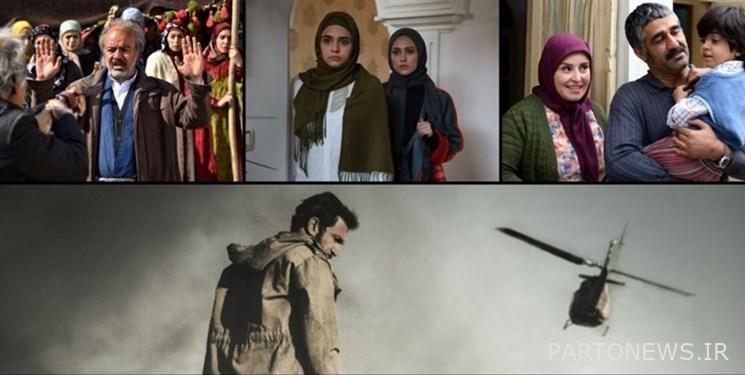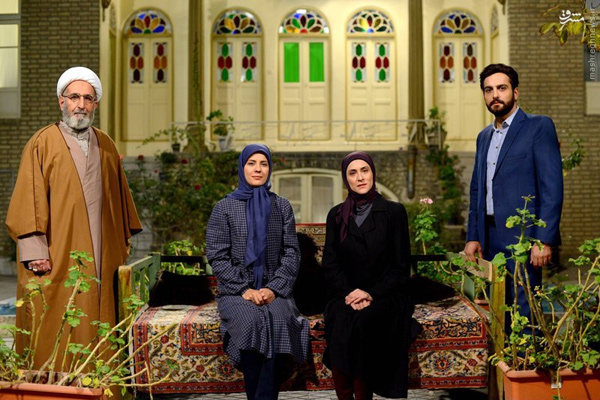When will new TV works replace archival productions? / A vital opportunity for the national media

Fars News Agency – Radio and TV Group: National and religious occasions have always been a special opportunity for television, because the audience of the national media has more expectations from the content of television programs during these days, and on various national and religious occasions such as the holy month of Ramadan, holidays and days of mourning for the innocent imams and Eid. Nowruz provides a good opportunity to watch TV. A look at the performance of serialization in radio and television shows that in the 80s and early 90s, the national media had a brilliant record in the field of religious serialization, especially in the month of Muharram.
The “Shab Daham” series by Hassan Fathi is still considered one of the most memorable series in the history of television, and after that, the television was able to broadcast series such as Safar Sabz, Waris, Masumit Rishid, Days of Protest, Wafa, Pridakht and Banu in the month of Muharram. By broadcasting high-profile series with religious and Islamic themes and content, the audience of the national media will sit at the feet of their home receivers.
Gradually, and with the beginning of the 90s, this trend went downwards to the point that currently, new TV series for religious occasions, especially Muharram and Safar, are not seen on TV, and TV only rebroadcasts popular series of the past. In the 1990s, we can only mention the valuable masterpiece of Daud Mirbagheri, “Mokhtarnameh” and the TV series “Pardeh Neshin” directed by Behrouz Shoaibi as suitable and popular religious works for the mourning days of Muharram.
The visible void of “A Special” series, hope for “Salman”
“Mokhtarnameh” is one of the rare cases of the “A Special” television series of the national media, whose rebroadcasts every year have a constant and possibly increasing audience. What is the reason for the audience’s tendency to replay “Mokhtarnameh” can be examined from two dimensions; First of all, what changes have been made in the way of broadcasting to the category of serialization in the last decade compared to the previous decade (80s) and how was the management environment of the 80s different from the 90s. The second issue is related to the art of directing and creating the work. The power of imagery, the logical connection with the social reality of the society, the creation of brilliant scenes and lasting dialogues are among the obvious and remarkable features of Mir Bagheri’s works. A subject that the durability and attractiveness of Mir Bagheri’s works depends on them. These days, he is following the production process of “Salman Farsi” TV series as a special A project, he can ease the imagination of the audience by producing a luxurious and quality work in the frame of national media. In the following, you can see an example of the lasting dialogues of the series Imam Ali (peace be upon him) directed by Daud Mirbakhri:
The large amount of serials that were aired during the month of Muharram in the past decade did not attract the audience. Serials such as Time for Love, Firat, Yalda, Ye Teke Zemin, Rekhneh, Hatef, Ta Rahai, Aqiq, Flying at Zero Height, The Glory of a Life, Marzieh, Special Patrol, They Live in Stories, Nafs Shirin, Alamdar, Boi Tak, Sirzdeh, Bom and Banu, along with butterflies and…. whose names are not even known to the regular audience of TV series.
In these years, historical series, melodramas or mini-series were made that could not achieve the success of the works of the 80s, and it is as if television only went to make them to fulfill a task. Works that mainly use the elements used in the month of Muharram, such as holding ta’ziyehs and setting up takiyas, and in a minimal situation, they deal with getting healing and in the best case, with spiritual changes and transformations, but with a not very coherent and strong dramatic structure.
In fact, in the last decade, the usual solution of television in these days has been either to profit from the productions of previous years and to repeat the rebroadcasts of previous attractive series, or to produce mixed special programs as the easiest way to fill the airwaves, which are neither time-consuming nor expensive. But it should be noted that, on the one hand, serials have always had a special place in the TV conductor, and on the other hand, national and religious occasions are a part of the religious and national record of every country, and due to the emotional and psychological sense of the audience towards these special days, the audience is expectant. More of the national media is on the receiving end and it is necessary for the managers of the national media to take care of maintaining the trust of the audience with planning and careful planning, and by taking care of the media productions, they should start selecting experts in this field to produce special and ritual works.
Sufficient time is required to create special works
Basically, the creation of a performance collection regarding special occasions requires extensive field research and obtaining the necessary information in the religious and ritual field, and therefore, the production of works suitable for religious and ritual occasions requires sufficient time for the production team. In fact, making series with religious themes requires preparations, and sometimes the time required to prepare these preparations is not available to the production team, especially the writers’ team, and we have actually witnessed the decline of television productions, making works out of homework and following stereotypes in the work of program makers. We are an occasion. A factor that makes the audience more tired.

Less than a year has passed since the establishment of the new management team in the Broadcasting Organization, and a look at the appointments of the head of the national media shows the desire and will of Peyman Jebeli for transformation in the various structures of the national media. In the statements of the new and young directors of Sedavasima on issues such as the priority of quality over the quantity of the networks’ productions, making quality series instead of the multitude of low-quality works, delivering complete and detailed scripts instead of providing an outline by the producers to Simafilm, the focus of the program makers on creativity and innovation Instead of relying on celebrities, emphasis has been placed on attracting audiences and synergizing facilities and human resources.
Therefore, this year, it is expected that we will see the results of the injection of new and fresh managers of Sedavasima in the quality of broadcasting networks and productions, and according to the statement of the head of the National Media, this series will move towards audience-oriented and quality-oriented more than before. Therefore, it is necessary for the new managers to have a serious review of the productions and products of radio and television so that their output is in accordance with the four main components, that is, the audience’s desire, audience’s need, audience’s interest and audience’s taste.
With an optimistic and of course hopeful view, it can be said that the main reason for the rebroadcasting of repeated series in the past year is the focus of managers on attracting expert, committed and skilled workers to produce works with the necessary standards so that we can hope for the prosperity of series and television programs, and the audience is discouraged from The national media should once again return to the embrace of television. It is hoped that the new managers of the national media will take advantage of this opportunity to improve the quality of the productions and gain the satisfaction of the audience from the radio and television productions.
end of message/
You can edit this article
Suggest this article for the first page

